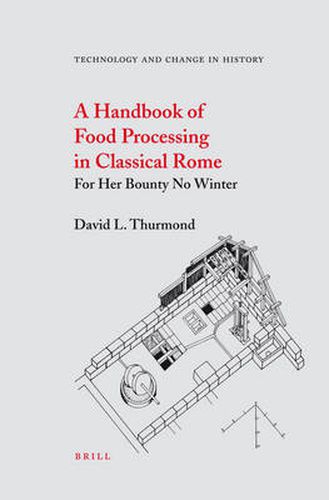Readings Newsletter
Become a Readings Member to make your shopping experience even easier.
Sign in or sign up for free!
You’re not far away from qualifying for FREE standard shipping within Australia
You’ve qualified for FREE standard shipping within Australia
The cart is loading…






Rome was able to support a huge urban population by providing it with the rudiments of human nutrition in the form of processed foods. This volume contains a careful analysis of those food processes. The work is organized on the basis of the presumed importance of those foods, beginning with the so-called Mediterranean Triad of cereals (particularly wheaten bread), olive oil and wine, then dealing with plant products such as legumes, vegetables and fruits, then animal products, and ending with the condiments (salts, sugars, acids, spices) which were themselves the agents for the preservation of other foods. The work combines analysis of literary and archaeological evidence from antiquity with that of traditional comparative practices and modern food science.
$9.00 standard shipping within Australia
FREE standard shipping within Australia for orders over $100.00
Express & International shipping calculated at checkout
Rome was able to support a huge urban population by providing it with the rudiments of human nutrition in the form of processed foods. This volume contains a careful analysis of those food processes. The work is organized on the basis of the presumed importance of those foods, beginning with the so-called Mediterranean Triad of cereals (particularly wheaten bread), olive oil and wine, then dealing with plant products such as legumes, vegetables and fruits, then animal products, and ending with the condiments (salts, sugars, acids, spices) which were themselves the agents for the preservation of other foods. The work combines analysis of literary and archaeological evidence from antiquity with that of traditional comparative practices and modern food science.